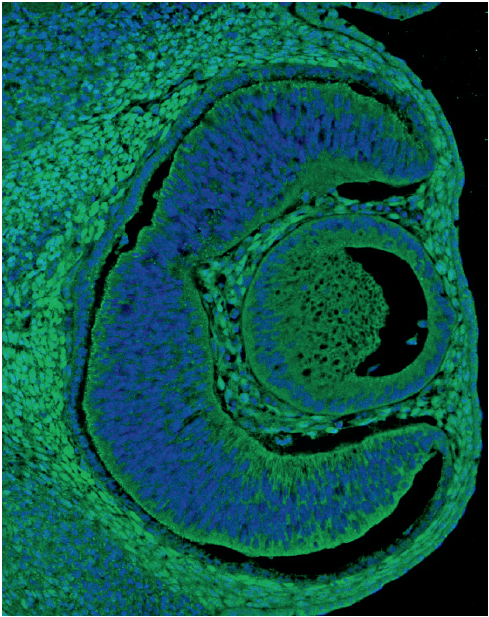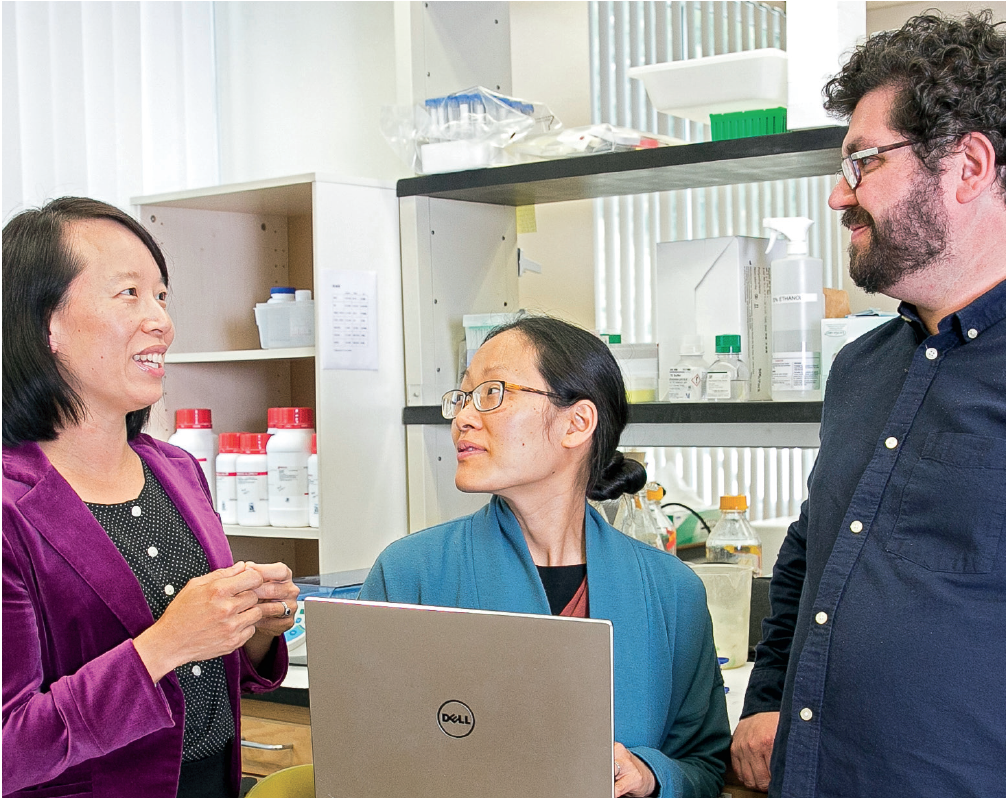Patients with glaucoma and retinal degenerations need better solutions. Researchers deploy advanced tools to find novel ways to save their sight.
Protecting Vulnerable Cells
Photo caption above: To halt glaucoma, Dr. Ou, Dr. Dunn, and Dr. Della Santina investigate novel avenues for preventing damage to retinal nerve cells.
Christie Hastings knows firsthand that glaucoma steals sight. By the time she noticed blurring in her visual field, her sight was irreversibly compromised. Innovative avenues that identify glaucoma earlier and treat it more effectively promise to transform outcomes for patients like Christie.
“Patients need more effective strategies,” says glaucoma specialist Yvonne Ou, MD. To advance novel paradigms to halt the disease, Dr. Ou collaborates with two coinvestigators: physiologist Felice Dunn, PhD, and neuroscientist Luca Della Santina, PhD.
The team uses molecular, anatomical, electrophysiological, and modeling techniques to understand how increased eye pressure, common in glaucoma, affects potentially weaker retinal nerve cells and their neighbors. They also explore how retinal circuits mend themselves and continue functioning even when some cells are damaged.
“Learning how to protect the retinal nerve cells most vulnerable to damage is key to stopping glaucoma,” says Dr. Dunn. “We’re excited to pursue this promising direction.”
Altering Genes to Save Sight
Retinitis pigmentosa is a major interest for geneticist Douglas Gould, PhD. Dr. Gould and his team explore how “quality control” mechanisms inside retinal cells try to fix or dispose of mutated proteins.

Lorie Hirson is losing her sight to retinitis pigmentosa, but she is hopeful that future generations will be spared. “Vision scientists are getting closer to answers that will change our lives,” she says. “We’re proud to support their research.”

In this inherited disease, mutations in a particular protein cause the light-sensitive retinal cells to die off. Dr. Gould’s team will test whether altering this cellular process can preserve vision. If so, treatments to alter this process could potentially preserve sight for patients like Lorie.
Prenatal Signs of Glaucoma
Children as young as six months can get glaucoma and its companion, high intraocular pressure. Genetic mutations that lead to the formation of defective ocular cells and tissues in the front of the eye may lead to glaucoma in infancy or later in life.
Dr. Gould uses advanced imaging and molecular techniques to investigate how the front of the eye develops. “By understanding genes that contribute to structural defects, we will open new doors to glaucoma prevention and treatment,” says Dr. Gould.
Research support provided by the National Institutes of Health, Research to Prevent Blindness, and friends of That Man May See.

